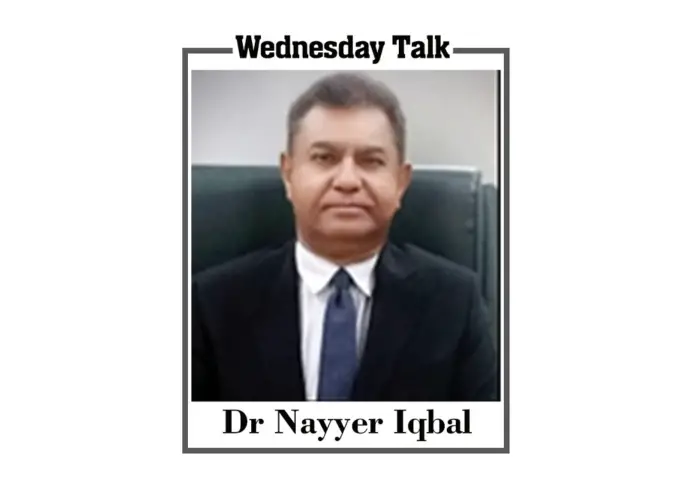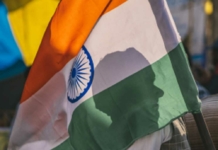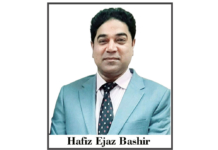Iran is experiencing ever-intensifying political unrest since 16 September. It started with the death of a 22-year-old Kurdish girl named Massa Ammine in Tehran while being in the custody of Morality police, named ‘Gashat-e-Eershad’.
Three days earlier, on 13 September she had been arrested for violating the obligatory dress code in public. Originally, she belonged to Saqqez, a small town in Kurdistan and was a student in the Iranian capital. The government claimed that she had died of a heart attack whereas the public believed that the physical and mental torture by police caused her death. The killing in dubious circumstances sparked off widespread protests across the country resulting in large-scale arrests and considerable loss of life.
The rumour that security forces had sexually abused the arrested female protesters added fuel to fire. The government however brushed aside all types of allegations and accused the western media was propagating for its own reasons. Meanwhile, strict censorship was imposed and internet plus cell services were restricted. The situation has persisted uninterruptedly.
The term ‘hijab’ is an Arabic word meaning ‘cover’, however, there is no unanimity between different schools of thought over its exact nature. Hijab laws were introduced in Iran in April 1983 under which all women, including non-Muslims and foreigners visiting Iran, were bound to wear hijab and loose dress in public. Criminal punishment for violators was legislated in the 1990s and ranged from fines to imprisonment.
In January 2018, the system of ‘Islamic Educational Classes’ for the ‘improper hijabis’ was introduced however, the ‘bad hijabis’ continued to undergo criminal proceedings as per previous practice. The loosely drafted law enhanced the discretionary power of morality police to interpret it differently and exploit women in various ways.
This police have remained controversial since their inception and have been criticized for their high-handedness. The protest that started against the ‘hijab laws’ has gradually evolved to encompass broad anti-government grievances and won worldwide support. The slogan-chanting against the Supreme Leader Ali Khamenei and Iran’s theocracy has become a routine matter. The revolutionary sentiment is simmering throughout the country and youth participation in rallies is not diminishing. The regularity and magnitude of protests and the nature of demands, clearly pose a direct challenge to the legitimacy of the current order. President Ibrahim Raise while defending his government has emphasized that Iran is a champion of women as well as human rights.
He blamed the West for sponsoring the movement to impose more sanctions on Tehran which is in the process of negotiating a deal on its nuclear program. He has also signalled that the protest is ‘unlikely to trigger reforms.
The intensity of public outrage can be gauged from the fact that on 16 December huge processions chanted ‘death to the dictator’ pointing towards supreme leader Ayatollah Ali Khamenei. Zahedan, the capital of Sistan-Baluchistan, on Iran’s south-eastern border with Afghanistan and Pakistan, has particularly been in commotion.
This restiveness was due to the local population’s adherence to Sunni Islam and resentment against sectarian-based discrimination. Here, on 30 September, 90 people were killed by the local police and the day has penetrated into the minds of people as ‘Black Friday’. The public execution of two boys in their early twenties in Tehran on 8 December and 26 more at the risk has surged the disturbance. The activists are being sentenced to death on the charges of ‘moharebch’ or ‘waging war against GOD’, and ‘efsad-e-fel-arz’ or ‘corruption on earth’. Moreover, the bodies of the executed persons are not being released to avoid family funerals and gatherings at the graves.
The international media has highlighted time and again that Iran was the world’s most prolific user of capital punishment after China. ‘Iran Human Rights’ (IHR), a Norway-based NGO has reported the killing of 458 protesters during the movement. On the other side, the detainees, approximately 18,000 in number, are being subjected to various forms of physical and psychological torture and other ill-treatment. As many as 1,024 indictments have been issued in connection with distress in Tehran only. It is noteworthy that 40 foreign nationals have also been detained for participating in the agitation. As the situation is escalating, the state agencies have deployed helicopters, heavy weapons, and mounted machine guns at the sensitive points of big cities.
The strict actions of the Iranian government have led to worldwide condemnation and sanctions. The UNO has excluded Iran from the UN Committee on Women’s Rights and the EU has imposed restrictions on some ultra-conservative clerics apart from issuing a strongly-worded statement against Iran. The Office of the High Commissioner for Human Rights (OHCHR) has urged the Iranian government to address people’s demands for ‘equality, dignity and rights’, instead of using disproportionate force against demonstrators.
This is not the first time that the Iranians have raised their voice against state policies. The ‘Green Movement’ of 2009 had mushroomed into large crowds. The 2017 movement remembered as ‘The Girls of Revolution Street’ was noticeable wherein a large number of arrests, particularly of women, were made for removing the ‘hijabs’. The 2019- uprising against the price-hike in which 1,500 protesters were killed during the ‘Bloody November’ is also mentionable. Doubtlessly, the majority of the Iranian public has been tired of the present regime but they have not been able to come-up with a ‘political alternative’. The regime has been successful in preventing the emergence of a single opposition leader and keeping the unions under control.
In the past, ex-President Muhammad Khatami was cherished by the reformists but gradually he has become irrelevant. Political analysts view that the non-appearance of any unquestioned anti-government personality has proven to be both a strength and weakness. It makes them ‘harder to repress but also impedes the development of a viable political movement’. In absence of any leader ‘, the images of murdered demonstrators keep them united as ‘the figure of a martyr is central to the Shiite culture’. The weakness of being leaderless may prove to be the ‘Achilles heel’ although few high-statured observers exemplify the ‘French Revolution’ which was leaderless too.






